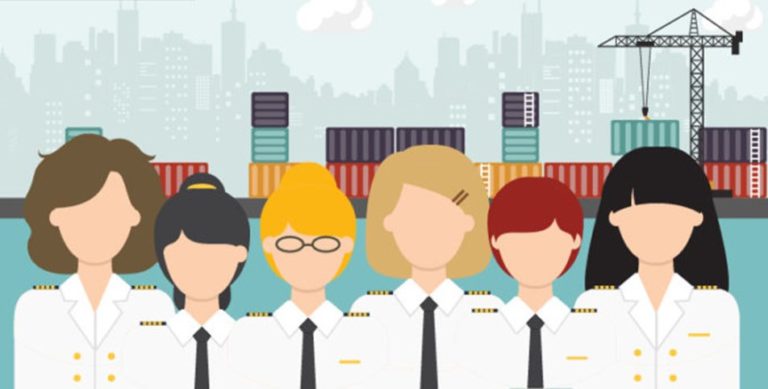
A balance in gender equality has shown better performance in companies and better growth and development in countries. The contribution of women has added immense value to societies, communities, economies, and nations. But the maritime industry considered a traditional industry is often seen as a Man’s world. According to the International Maritime Organization (IMO), women represent only 2% of 1,2 million seafarers in the world. Only 1% being sailors and 94% working in the cruise industry. What are the causes? What can be done to recruit more women into maritime?
The Causes
Lack of information could be the major factor for women not joining this sector. Little information is available for women to get a sense of life on the waters. The career prospects, roles and opportunities are not often known. Another factor could be the lack of or very few role models in this sector, for young girls to look up to and be motivated to pursue a career in this industry. There is fear about the safety of women at sea and therefore the family too is very unsure about this career choice. Long stay at sea could also hamper the work family balance for women, thus they do not garner the support of the family to take on a challenging career. While there are other options in maritime for women, it boils down to lack of information, and uncertainty, the women, and their families face.
There is also a lack of access to jobs and opportunities offered by companies. To add to this, there is uncertainty about moving up the ladder in this field. This could be attributed to lack of support in the workplace owing to the male domination in the industry. The most important factor is the general stigma attached to the industry and how it is still considered a man’s job.
Contribution of IMO
The IMO has taken considerable steps to balance the gender workforce in maritime. In 1988, IMO initiated the ‘Women in Maritime’ programme under the slogan “Training Visibility Recognition”. This was the first step taken to encourage women to enter the field as well as companies to recruit women. IMO promoted participation of women in shore based as well as sea going posts. “Empowering Women in the Maritime Community” was the theme for World Maritime Day theme in 2019. This provided an opportunity to raise awareness about gender equality and to emphasize the important role played by women all over the world in the maritime sector.
Currently, women represent only 1.2% percent of the global seafarer workforce as per the BIMCO/ICS 2021 Seafarer Workforce Report. This clearly highlighted the changing trends as the report estimated 24,059 women serving as seafarers, which was a 45.8% increase compared to the 2015 report. The IMO offers gender specific scholarships for high level technical training for women in developing countries, identifying, and selecting women for career development opportunities in administration, ports, and training institutes. The establishment of associations like Women’s international shipping and trading association (WISTA) and various initiatives taken by the IMO has really propelled a positive change in the industry.
What can we do?
Information needs to be made available about the career opportunities waiting for women in the industry. This starts with educators bringing more awareness about it to girls at a young age itself. Schools need to play an important role by initiating talks about maritime and related sectors. Journals and magazines of institutions could talk more about the opportunities in store for women in maritime, this would help women and their families have a better understanding of the industry.
Companies are taking safety protocols, policies, and complaint measures into account for women’s safety as well as mental health. Various steps are being taken to provide and inspire women to join the maritime force. But the biggest push could be the support of family and society to pursue this career. The biggest hurdle women face is to stand against the stigmas of society about the industry. Support for women would be the biggest propeller for women’s presence in the industry.
For more information about the maritime world, stay tuned to maritime news.
Source: www.imo.org, www.marineinsight.com, www.mitags.org